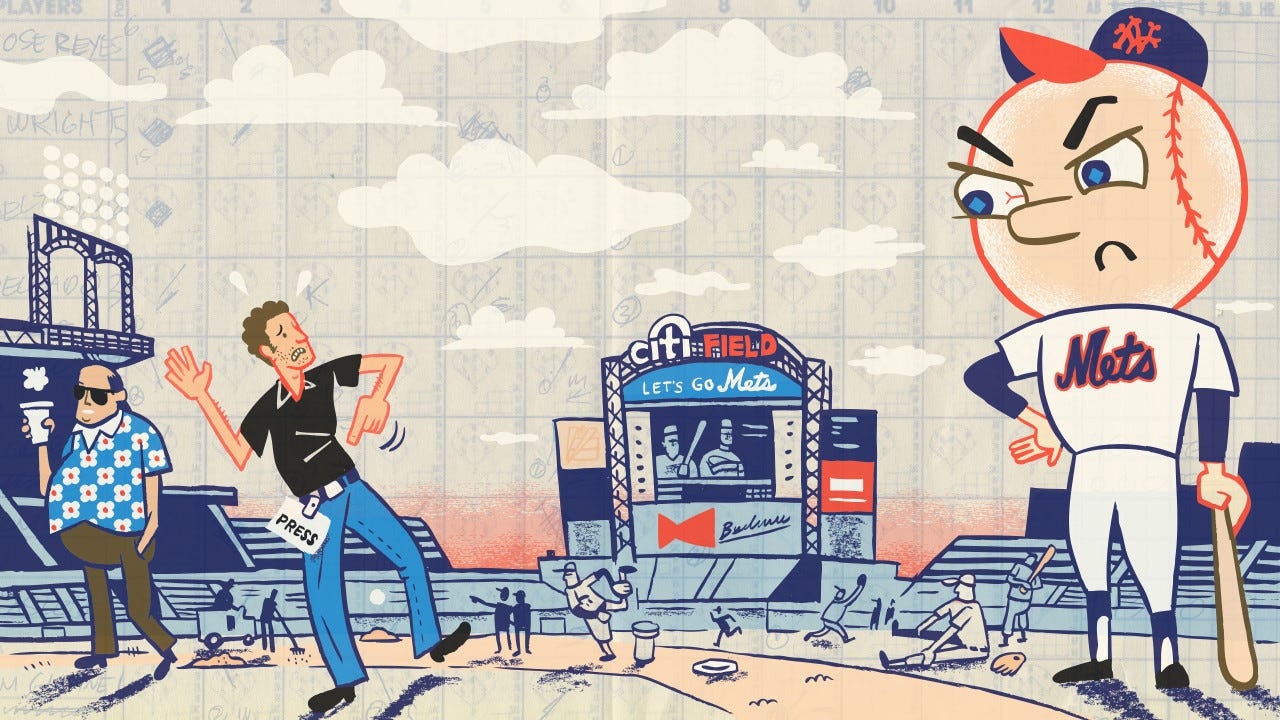The Misadventures of a Baseball Blogger
A bored college student graduates from bedroom blogging to Big League reporting, but the privileged view from the infield only makes him appreciate the bleacher seats that much more.
I have had my sneakers caked with the clay from a Major League Baseball field. I have explored an empty stadium in Florida in the rain. I have sat next to Keith Olbermann during a game and had a brief conversation with him about my hamburger. I have lent a pen to David Wright, and then used that pen to take tests for the rest of my senior year of college. I have tried to explain the infield fly rule to a middle-age man from Scotland who writes a rugby blog. I have successfully snuck into the background of postgame television interviews.
I have also tripped on the dugout stairs as Ike Davis was recording a radio interview, and believe his “whoa, easy there” made it on the air. I have fallen over the soft back of a sofa chair in the Mets clubhouse while trying to lean back casually, and then pretended nothing happened. I have seen far more naked men than I ever wanted, and barring an unforeseen career in adult movies, I believe I will die having seen more nak…
Keep reading with a 7-day free trial
Subscribe to Narratively to keep reading this post and get 7 days of free access to the full post archives.





